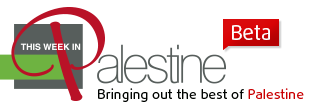On an unusually warm summer morning in Ramallah, Sani Meo, publisher of This Week in Palestine, met with Omar Al-Qattan who served for two terms as chairman of the Palestinian Museum Task Force. He is also chairperson of the board of trustees of the A.M. Qattan Foundation and a member of the board of trustees of Taawon (previously known as Welfare Association).
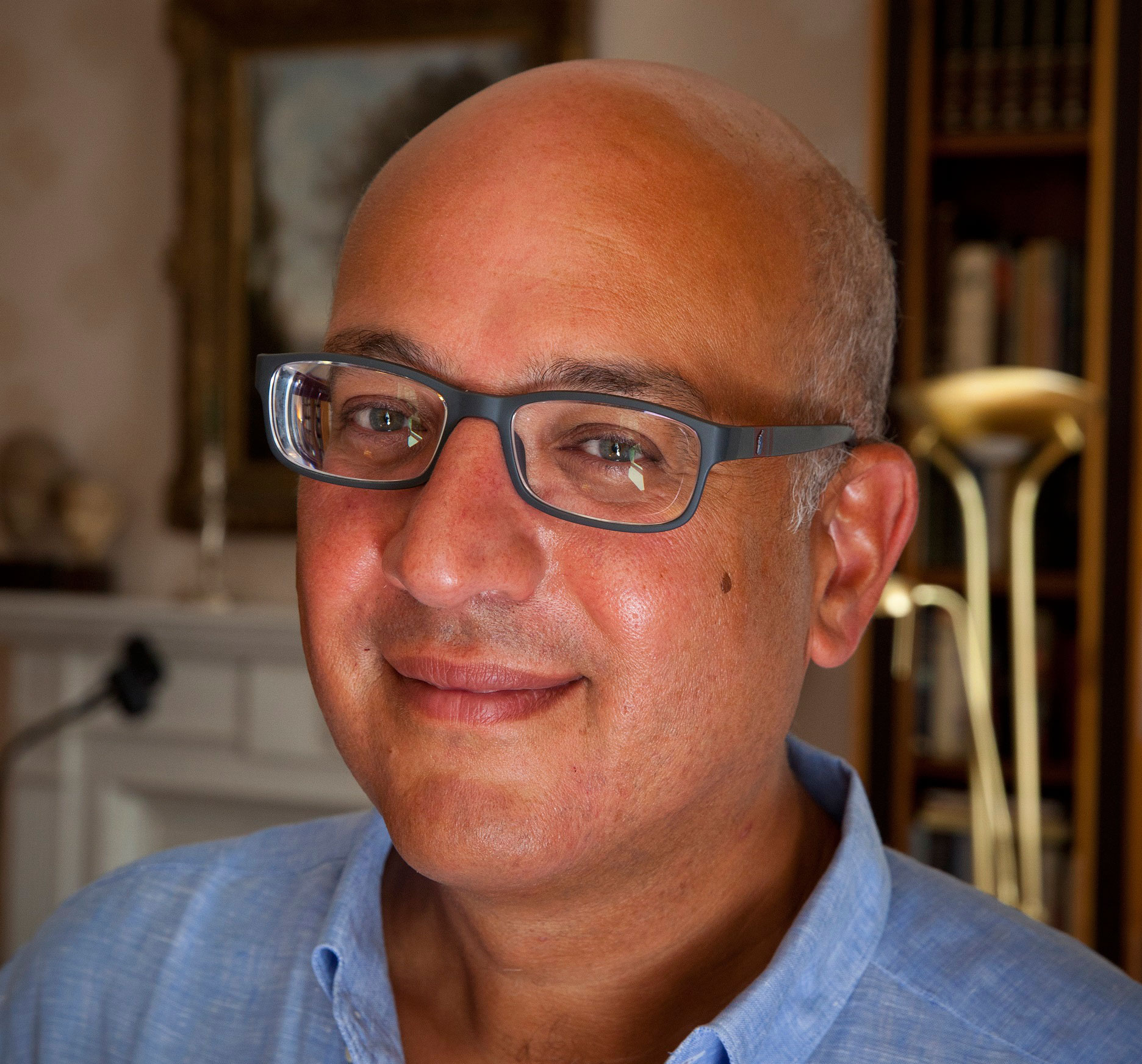
SM: How do you feel about the recent opening of the exhibition Jerusalem Lives at The Palestinian Museum in Birzeit, more than one year after the museum’s inauguration and its negative coverage by some foreign media that criticized the museum for opening while it was still empty?
OQ: I feel vindicated. Given the background of skepticism, especially in some of the international press, I am rather pleased.
SM: Do you consider writing a rebuttal now?
OQ: No. I don’t have time to waste on a rebuttal to a small number of disrespectful journalists who lack understanding of the enormity of the task involved, when a number of private citizens come together in Palestine amidst many difficulties of various sorts in order to create a beautiful piece of architecture. Nor do I wish to argue with what felt to me to be the relics of a condescending neo-colonial attitude that could only see weakness and internal conflict among the “natives” and totally lacked solidarity or understanding of how important it is to achieve something so ambitious and positive in a country under military occupation, where the population, especially the youth, is becoming increasingly disenchanted. I prefer to look at the positive side of things. We need to look forward. Confidence has been established in the museum’s ability to produce an exciting program, and it has created an exhibition in record time, to very high standards. Of course, there are some weaker and some stronger points, but overall this accomplishment is pretty amazing.
SM: What are the stronger or weaker points of the museum or the current exhibition?
OQ: I have perhaps been too closely involved in the project to give an objective appraisal. But my personal impression is that the exhibition looks classy. I particularly appreciate the ambition to create a complex project – Jerusalem as a failed global city – which the curator, Reem Fadda, and her team have chosen to approach from a variety of angles that include documentation, posters, media, photography, and some powerful new commissions in the museum’s exquisite gardens.
SM: You indeed sounded pleased when we saw you during the exhibition launch party.
OQ: Yes, I am delighted by the spirit of the project. It is not escapist, pretending that things are rosy. Indeed, the imagery is stark and painful. But at the same time it is assertive of a creative, forward-looking spirit. It is funny, witty, yet contains elements of pathos and tragedy, full of humanity and love. Such a combination of critical awareness with rich understanding of a bitter reality is very exciting…
SM: Does it carry a political message? Is culture in this way a tool of resistance?
OQ: I do not consider culture to be a tool of resistance; in fact, I consider this declaration to be something of a public relations stunt, bordering on pretentiousness. It is a myth, created by the cultural sector in order to make itself look more important than it actually is. We must be modest.
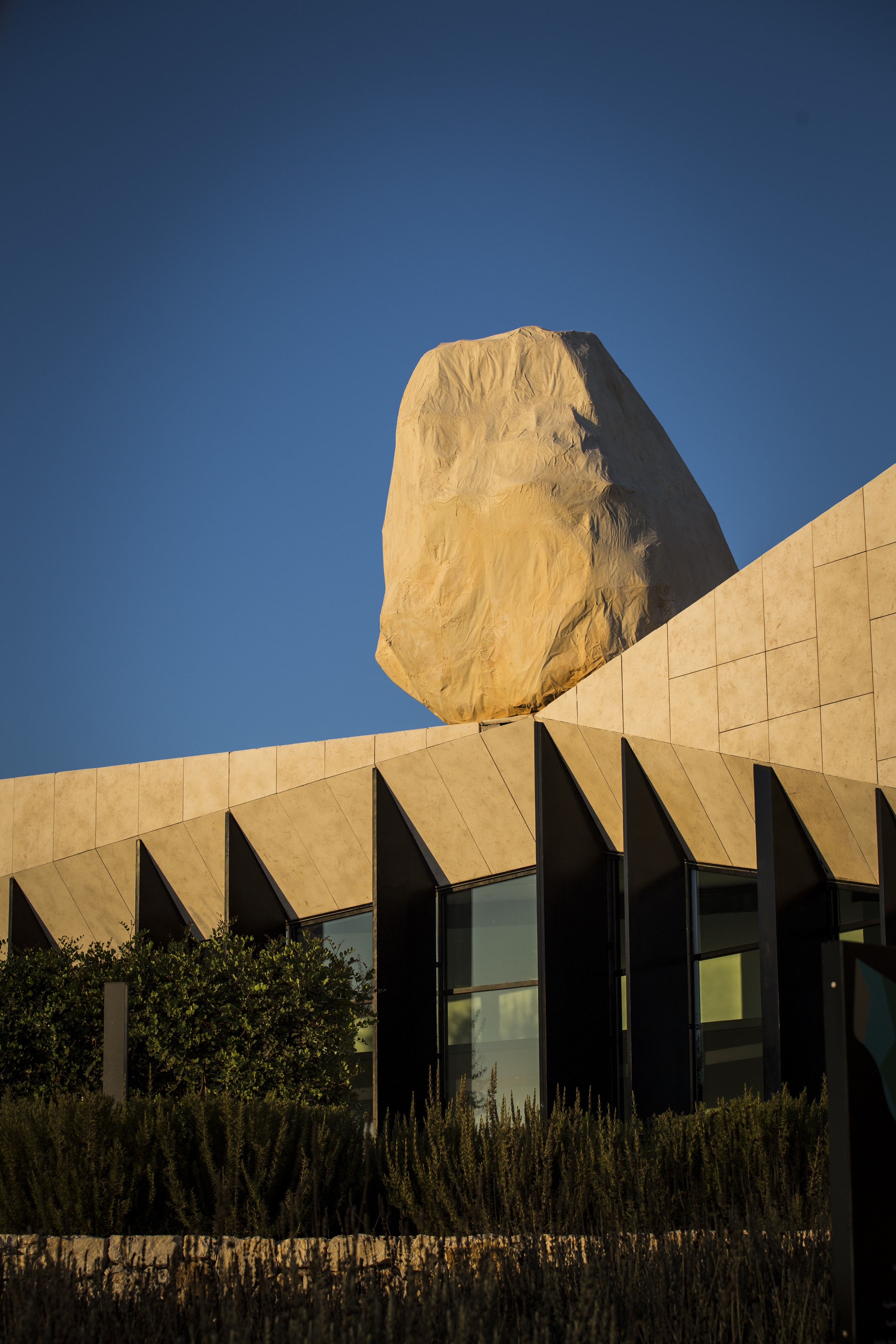
Photo by Ziad Trad. © The Palestinian Museum.
SM: But what if your identity is being threatened, as in our case?
OQ: I do not subscribe to a nationalist, identity-focused outlook, so I don’t understand these issues of identity very well. I believe the struggle in Palestine should be for justice, equality, and the right to self-determination rather than for the right to wave a flag. My own background is multinational: I am a Palestinian who was born in Lebanon, studied in Britain and Belgium, and whose family has a very strong connection to Kuwait. My family is Muslim but I grew up in a mixed, often predominantly Christian environment. This identity thing is foreign to me. I do believe, however, that to enable people, especially young people, to discover the world, or to realize their talents and feel confident – to teach them not to accept nonsense or dictation, domination, or abuses of power – is a form of resistance. But this is not limited to culture; it also involves, for example, education. Simply holding a concert in some venue is not necessarily an act of resistance. Engaging in cultural activities, however, can strengthen the mindset that leads to resistance. The belief of a society, and of young people especially, that they can live in dignity – and to insist on that – encouraging and teaching them to believe that they can improve their own lot, these are forms of resistance, yes.
But such engagement can and must also be bolstered by a self-critical outlook. Many, many of our ills are self-inflicted. For example, there is no reason for all this filth on the sides of the streets of the Palestinian-Authority-governed areas, nor the terrible state of the urban planning or health system, and we cannot blame the Israelis for this. Successful resistance comes from a society that practices self-respect, protects the rights of its citizens, respects the rule of law, and preserves its natural environment. To help create such a society is a form of resistance yes, but that is not only about culture in the narrow sense used by people who claim that they practice a “culture of resistance.” (As you can see, I have an allergy to platitude.)
SM: I would like to challenge you here a bit. I believe that the filth or disrespect for the rule of law among all strata of society is caused by de-development in Palestine, which in turn is caused by the Israeli occupation. Negative behaviors are wrong, but they are symptoms that need to be cured. I do not tend to subscribe to such self-flagellation.
OQ: It is not self-flagellation. You have to understand that if you are “de-developed,” you are a society that is too weak to resist and therefore need to reconstitute your strengths and empower your citizens, and you must do so by example. I do not mean to take away from the injustice and brutality of the Israeli occupation, on the contrary! But one thing does not justify the other! Let me take the museum as a modest example. A group of people decided to work together for the public good. It has taken us time to reach our goal, but the accomplishment of having built an institution of this caliber is a clear sign that we, as Palestinians, can get together for the public good and can achieve success when we work collectively. But we do not always engage in such endeavors. Yes, we are divided politically, culturally, and geographically, but despite the hardships, despite the geographic isolation of our people behind the wall and checkpoints, we could and should resist attempts at cultural and mental fragmentation. Take the long-standing limited connection between the Palestinians in areas captured in 1948 and those in the West Bank after the Nakba, for example. That rift was our fault. It took 25 years, Ghassan Kanafani, and Mahmoud Darwish to connect us again and to make us recognize our brethren inside Israel as Palestinians. Let us not idealize ourselves either. Today there is an equally dangerous rift growing between the people of the Gaza Strip and the people of the West Bank, not to speak of East Jerusalem. It is the consequence no doubt of Israeli policy, but we have failed to resist it.
If we strengthen our individual and collective abilities and rebuild our social and political fabric, then culture in that sense does become a form of resistance. But in this statement, it is important to understand culture in a broad sense, which covers our values and ethics as well as our music and cinema.
SM: It is intriguing, even refreshing to hear this opinion; a little slap in the face of a cliché that we use. We do hope to open the eyes of our children through cultural activities. But let me move on to another question. You have helped build cultural institutions, not only in Palestine. Why?
OQ: I want to empower people using the resources that my family and I have available. And in Palestine this carries added significance because it happens in a society where morale has been crushed, especially among young people. This situation is compounded by the presence and actions of unimaginative and reactionary politicians who engage in frequently criminal and censorious behavior. Take the so-called children of stones, from the First Intifada. They were claimed as symbols of resistance. I can only see victims of violence, not sources of great national pride…
I want to help teachers and artists to build up reservoirs of confidence, defiance, and hope. Such reservoirs can then be used for larger endeavors. And I firmly believe that hugely ambitious and positive things can be achieved, especially when we act collectively.
SM: Cultural institutions in Palestine are suffering; there is simply no sustainability.
OQ: Here we must distinguish. At Qattan [Foundation], we work hard to support individuals and groups who are engaged in all the cultural spheres as well as in education – especially children, youth, and teachers. And we try to create continuity and sustainability as much as we can, even though we are only a private foundation that does not have the resources or the powers of a government entity. On the other hand, we must distinguish between lack of funding and artistic mediocrity. Maybe some initiatives began as good ideas, but then they failed to renew themselves and should therefore not have become institutions. Some institutions fail because they run out of ideas; they are simply not letting in new blood. At age 53 I am pretty close to running out of ideas. That is why many of our staff are under forty. And also, don’t forget, the economy is in bad shape worldwide; all public sectors are suffering. So it is not surprising that this is hitting Palestine particularly badly.
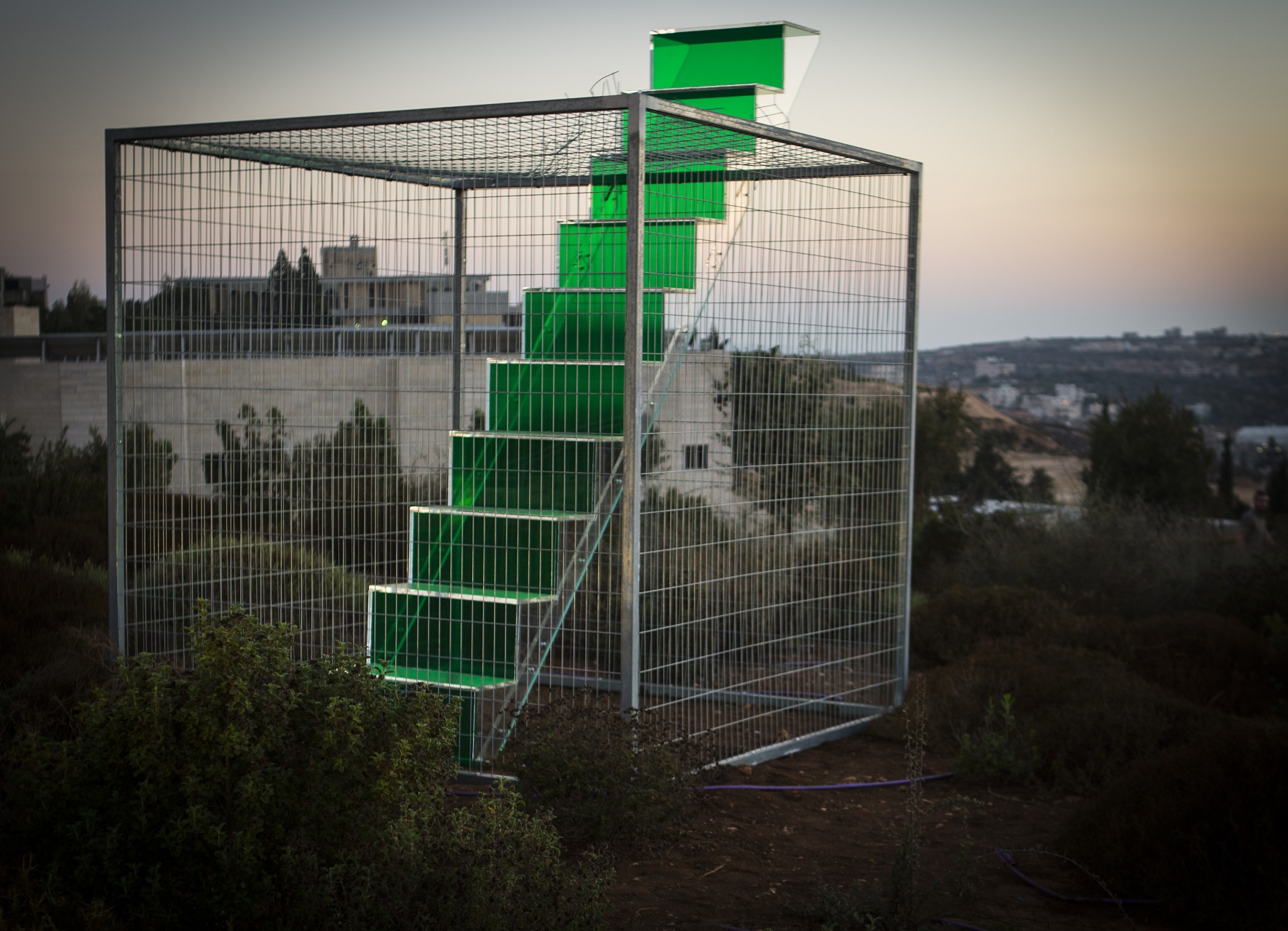
Photo by Ziad Trad. © The Palestinian Museum.
SM: Is government funding the solution? Or more awareness of the importance of cultural engagement and of the role culture can play, however small?
OQ: Regarding the involvement of government, there is a democratic funding process that has not yet been fully developed in the Palestinian context. Cultural institutions must be allowed to retain their editorial independence yet at the same time benefit from the right to gain governmental support in a transparent manner from funds generated through taxation. Democratic and transparent processes must be applied within clear parameters and criteria allowing independent institutions to apply for public funding regardless of their political affiliations. We need to lobby more in order to reach the stage where funding is less political, less self-serving, and more transparent.
SM: Do you think that the situation is getting better? I feel that at least we have someone who is aware of culture’s importance, but maybe he is not given the right means (as too much money is spent on security, for example).
OQ: It is a campaign we need to fight together. At the opening ceremony of the museum building last year, a journalist asked about the allegedly high cost of the museum. So I replied by asking her about the budget of the PA. If we take only 0.5 percent of that budget, it would be enough to build four or five museums of this magnitude every year. If then we really consider culture to be a means of resistance, let us give it the appropriate means… Our authorities still behave like private enterprises; each party is a closed fiefdom that only supports its own cultural manifestations. They are not democratic or transparent, and I would like to stress that we do not need to be an official state in order to act democratically. I chaired the museum for two terms; they ended, and that was that. Such are the rules. If we can do it at the museum, we can do it in every institution. We did not need a state to behave in this way. The museum is in place because of the initiative of private individuals who worked collectively. Take our streets; they are dirty because we have not decided to clean them. This applies across all sectors of society.
SM: Let us end on a somewhat lighter topic, back to the exhibition. Where will the museum go now?
OQ: The team has a program. The exhibition titled At the Seams, which deals with the political history of embroidery and was first shown at Dar el-Nimer in Beirut in spring 2016 at the same time as the building’s inauguration, will open in a modified form at the museum in early 2018. This is, in fact, one of the concepts of the museum: to serve as a hub, but also to have a series of connected satellites worldwide where there are significantly large Palestinian communities. The museum will soon launch its online platform. There is a planned exhibition about archeology and nationalism, educational programs, research and conferences, a digital archive… Both Jerusalem Lives and At the Seams have also been invited to tour internationally to several venues.
The team is more ready now to do outreach, communicate with the public, and deal with the press [than it was a year ago]. The quality of the programming can only improve, and there will be many opportunities for it to do so as there are so many projects to be researched and explored, based on the rich palette of our culture and history. I also hope that with time and experience, the team will become more confident to approach difficult topics. Don’t forget, one of the missions of the museum is to encourage people to tackle challenging topics, including those that may be sensitive to some Palestinians.
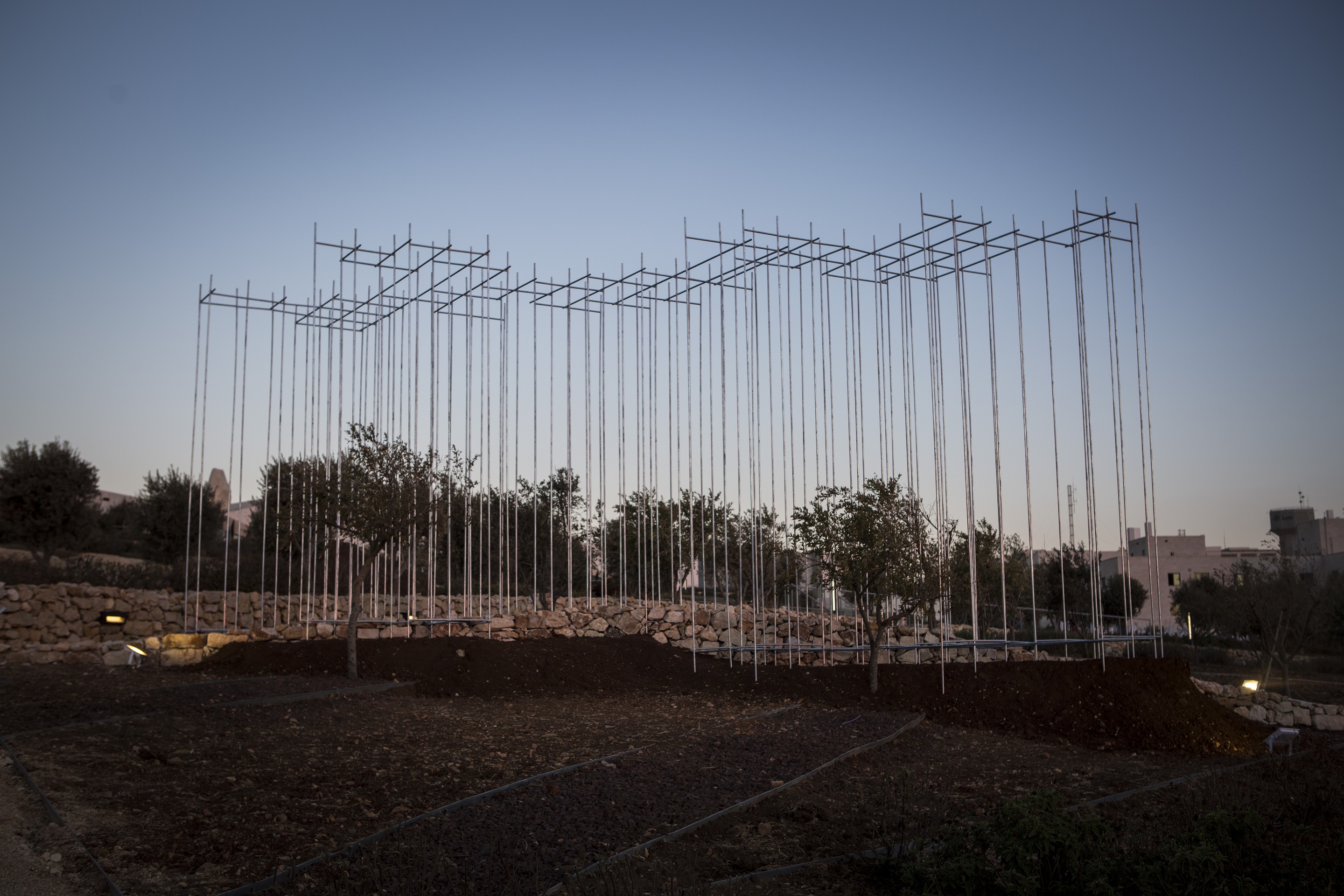
Galvanized steel, Jerusalem stone, timber, 1,200 x 300 x 500 cm.
Photo by Ziad Trad. © The Palestinian Museum.
SM: So the exhibits will become more daring. I must say, I have been involved in the cultural scene for many years, but visiting the museum for the first time, I felt proud, empowered. I kept telling myself, this is good, this is how things should be. Congratulations!
OQ: I was delighted too. There was a lot of skepticism that the exhibition would not open in time. And skepticism is healthy…
SM: How about the team, is it appropriate in size?
OQ: We need to be able to bring in more people, including people from abroad. But the museum, like all institutions in Palestine, continues to face challenges regarding permits and visas. It is very difficult to bring in people for extended periods of time because the Israelis will not grant them work permits. That is one of the main challenges, as is of course finding qualified people in Palestine, including Palestinians in the 1948 areas. There are few specialists on the research, editorial, and technical sides. So we have a long way to go before we can say that this team has everything it needs. If we can invest in training young professionals, we will need maybe seven or eight years. I am not sure whether you know that so far we have only accomplished part one of the museum. Phase two is supposed to be three times the current size and we hope to build it within the next ten years.
SM: What would be a catchy title for this interview?
OQ: (after very little thought) Vindicated!
The interview was transcribed by Tina Basem, TWiP’s content editor.

